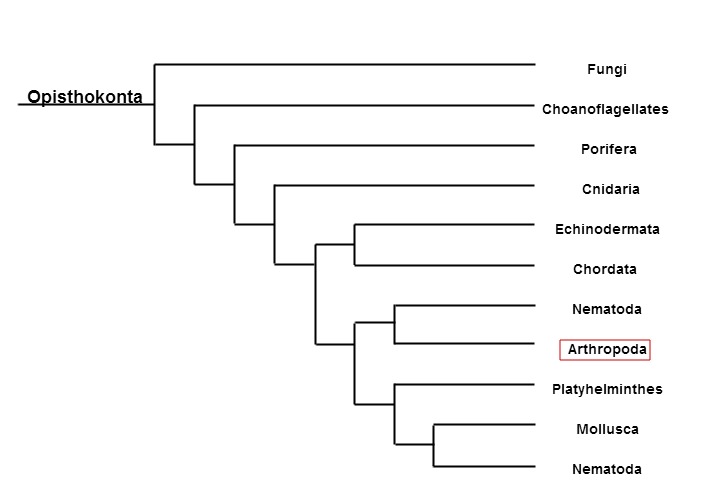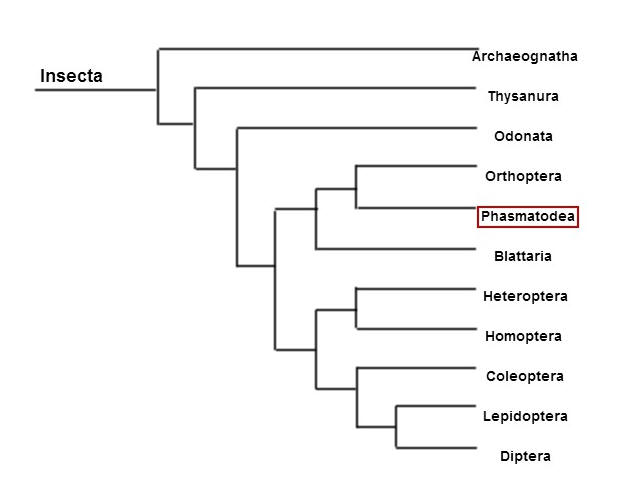Classification
Domain: Eukarya
All Eukaryotes have a nucleus and membrane-bound organelles.
They are generally much bigger than Bacteria and Archaea and more complex.
Major Clade: Opisthokonta
This clade has a posterior-facing flagellum at some point in
their life cycle.
Kingdom: Animalia
Members of the Animalia kingdom are multicellular, motile at
some stage, heterotrophic, and have no cell walls. They are
very diverse and vary greatly in their complexity.

Phylum: Arthropoda
Arthropods have an exoskeleton of chitin and jointed segmented
limbs. This is one of the most diverse phylogenetic groups
across all organisms.
Class: Insecta
Insects are typically segmented into three body sections: the
head, thorax, and abdomen. They usually have three pairs of
legs, compound eyes, and a pair of antennae.
Order: Phasmatodea
The Phasmids are also known as the stick insects. These insects
generally resemble fauna with long, thin bodies and legs and are
often well camouflaged. The name “Phasmatodea” comes from the
Greek word “Phasma,” which means “apparition” or “phantom”
(Sharp 2014).
Family:
Pseudophasmatidae
These are the striped walking sticks, distinguished by their
distinct colorations. They also have a mesothorax, which is
typically around three times the length of the prothorax
(Encylopedia of Life).
Genus: Anisomoprha
When Gray gave this genus the name “Anisomorpha,” he added the
prefix “A-,“ which means “without” or “none,” to Greek words
“isos,” which means “equal,” and “morphe,” which means “form.”
Together, the genus can be viewed as “nonisomorphic” or “of
unequal form”(Conle et al. 2009). All members of this genus
exhibit sexual dimorphism in which the female is much larger
than the male, and can also secrete a potent chemical defensive
spray from the thorax.
Species: Anisomorpha buprestoides
This particular species was first discovered in 1813 by Caspar
Stoll (Conle et al. 2009). It has a unique chemical
secretion that it sprays from its
prothoracic glands and is almost always found in pairs with
the male attached dorsally to the female.
